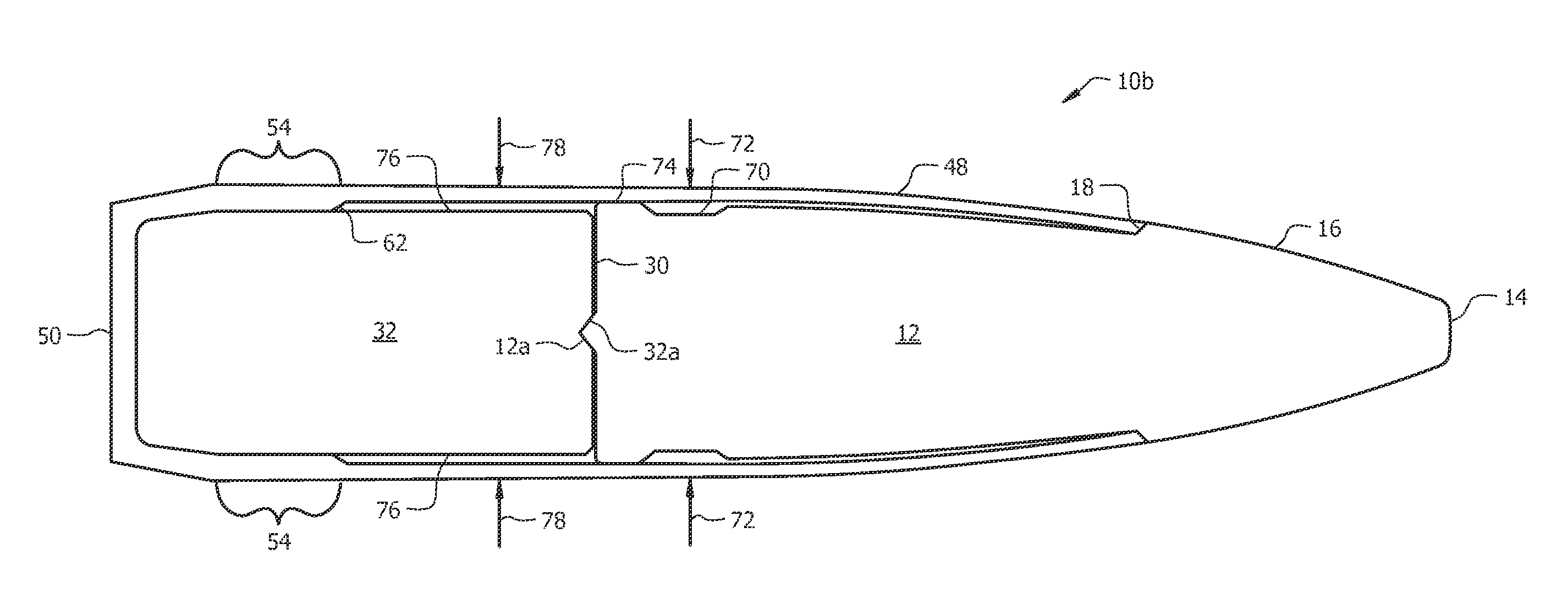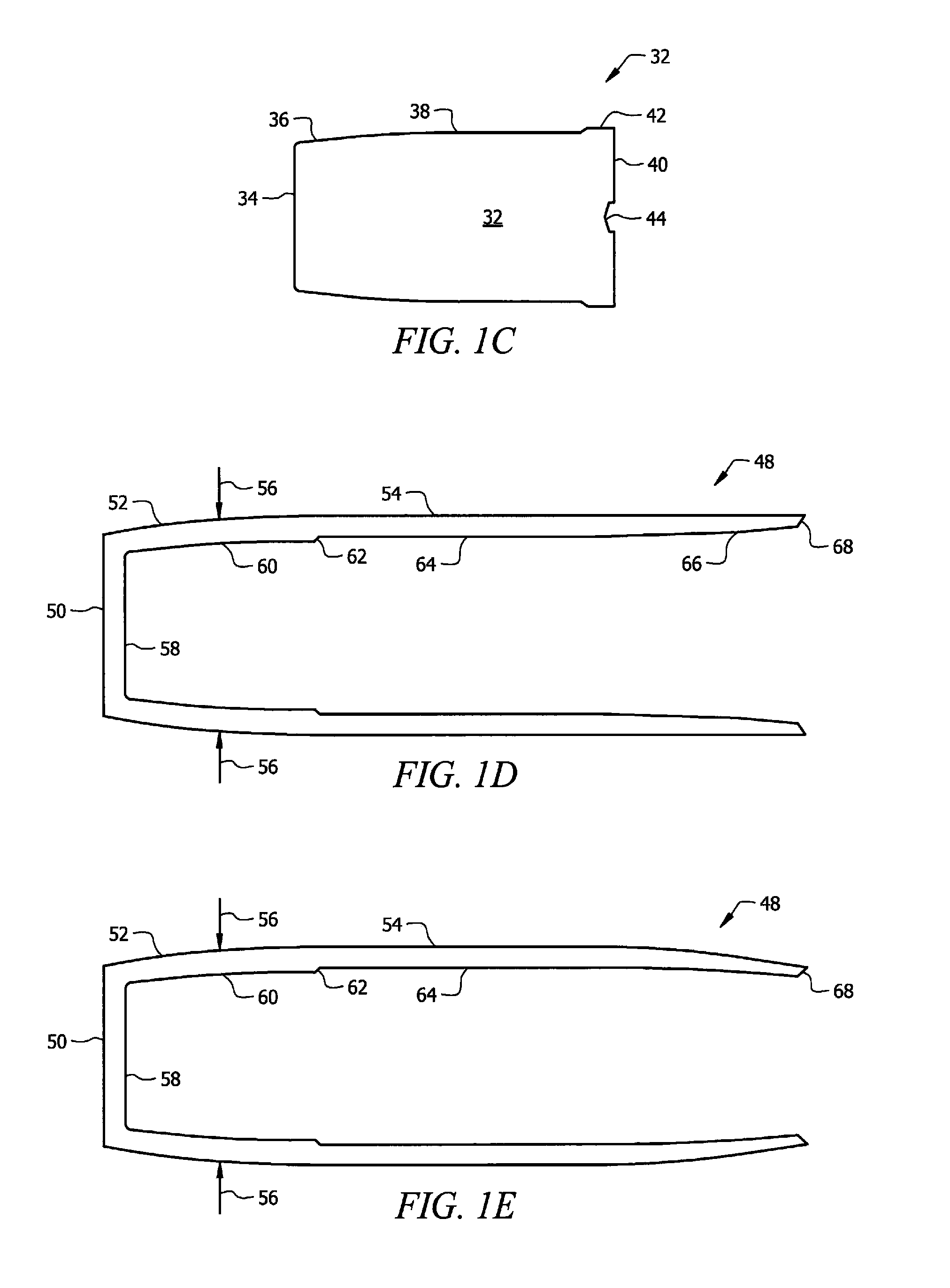High volume multiple component projectile assembly
a projectile and high-volume technology, applied in the field of ammunition, can solve problems such as reducing the effectiveness of projectiles
- Summary
- Abstract
- Description
- Claims
- Application Information
AI Technical Summary
Benefits of technology
Problems solved by technology
Method used
Image
Examples
first embodiment
[0043]the novel structure is denoted as a whole in FIG. 1A by the reference numeral 10a.
[0044]Structure 10a includes head 12, tail 32, and interface 48. Head 12 is depicted individually in FIG. 1B, tail 32 is depicted individually in FIG. 1C, and interface 48 is depicted individually in FIGS. 1D and 1E.
[0045]Leading end 14 of head 12 can be flat as depicted, rounded, or pointed. Frusto-conical section 16 extends from leading end 14 to a point about mid-length the length of said head. Diameter-reducing annular step 18 is formed at said location and the diameter of head 12 is reduced from said step 18 to the trailing end of said head. The reduced diameter increases slightly but linearly as at 20 from said annular step 18 to first transversely disposed annular ridge 22. The diameter of head 12 is uniform from first ridge 22 to second transversely disposed annular ridge 24 and is again uniform until it reaches flat trailing wall 30.
[0046]The leading end of interface 48 abuts diameter-r...
second embodiment
[0066]In this second embodiment, interface 48 is pre-compressed radially inwardly into annular recess 70 during assembly as indicated by directional arrows 72. The compression is produced by a cannelure die that also produces a bullet knurl with symmetrically arranged pronged teeth. A wheel die would deform the bullet shape.
[0067]In this second embodiment, annular diameter-reducing step 18 is formed in head 12 about one-third of the way from its flat leading end 14 to its flat trailing end 30. As in the first embodiment, the leading end of interface 48 has a thickness equal to the depth of step 18 so that an exterior surface of head 12 is flush with an exterior surface of interface 48.
[0068]The internal diameter of interface 48 in this second embodiment increases at diameter increasing step 62 so that annular recess 76 is created between said interface and tail 32. Annular recess 76 facilitates projectile assembly by reducing misalignment during such assembly. After assembly, radial...
third embodiment
[0075]Head 12 of this third embodiment is individually depicted in FIG. 3B and tail 32 is individually depicted in FIG. 3C.
PUM
 Login to View More
Login to View More Abstract
Description
Claims
Application Information
 Login to View More
Login to View More - R&D
- Intellectual Property
- Life Sciences
- Materials
- Tech Scout
- Unparalleled Data Quality
- Higher Quality Content
- 60% Fewer Hallucinations
Browse by: Latest US Patents, China's latest patents, Technical Efficacy Thesaurus, Application Domain, Technology Topic, Popular Technical Reports.
© 2025 PatSnap. All rights reserved.Legal|Privacy policy|Modern Slavery Act Transparency Statement|Sitemap|About US| Contact US: help@patsnap.com



